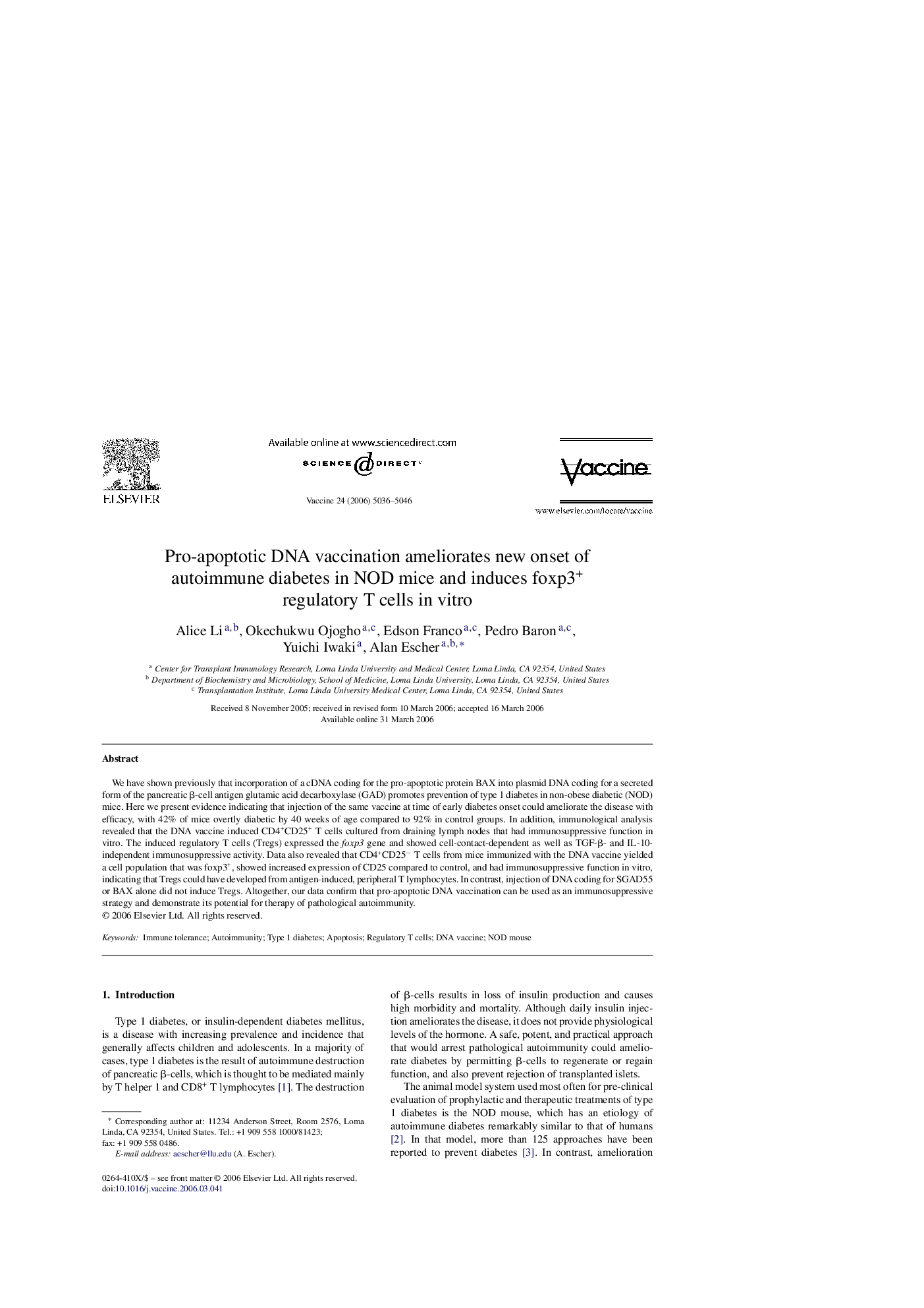| Article ID | Journal | Published Year | Pages | File Type |
|---|---|---|---|---|
| 2410039 | Vaccine | 2006 | 11 Pages |
We have shown previously that incorporation of a cDNA coding for the pro-apoptotic protein BAX into plasmid DNA coding for a secreted form of the pancreatic β-cell antigen glutamic acid decarboxylase (GAD) promotes prevention of type 1 diabetes in non-obese diabetic (NOD) mice. Here we present evidence indicating that injection of the same vaccine at time of early diabetes onset could ameliorate the disease with efficacy, with 42% of mice overtly diabetic by 40 weeks of age compared to 92% in control groups. In addition, immunological analysis revealed that the DNA vaccine induced CD4+CD25+ T cells cultured from draining lymph nodes that had immunosuppressive function in vitro. The induced regulatory T cells (Tregs) expressed the foxp3 gene and showed cell-contact-dependent as well as TGF-β- and IL-10-independent immunosuppressive activity. Data also revealed that CD4+CD25− T cells from mice immunized with the DNA vaccine yielded a cell population that was foxp3+, showed increased expression of CD25 compared to control, and had immunosuppressive function in vitro, indicating that Tregs could have developed from antigen-induced, peripheral T lymphocytes. In contrast, injection of DNA coding for SGAD55 or BAX alone did not induce Tregs. Altogether, our data confirm that pro-apoptotic DNA vaccination can be used as an immunosuppressive strategy and demonstrate its potential for therapy of pathological autoimmunity.
